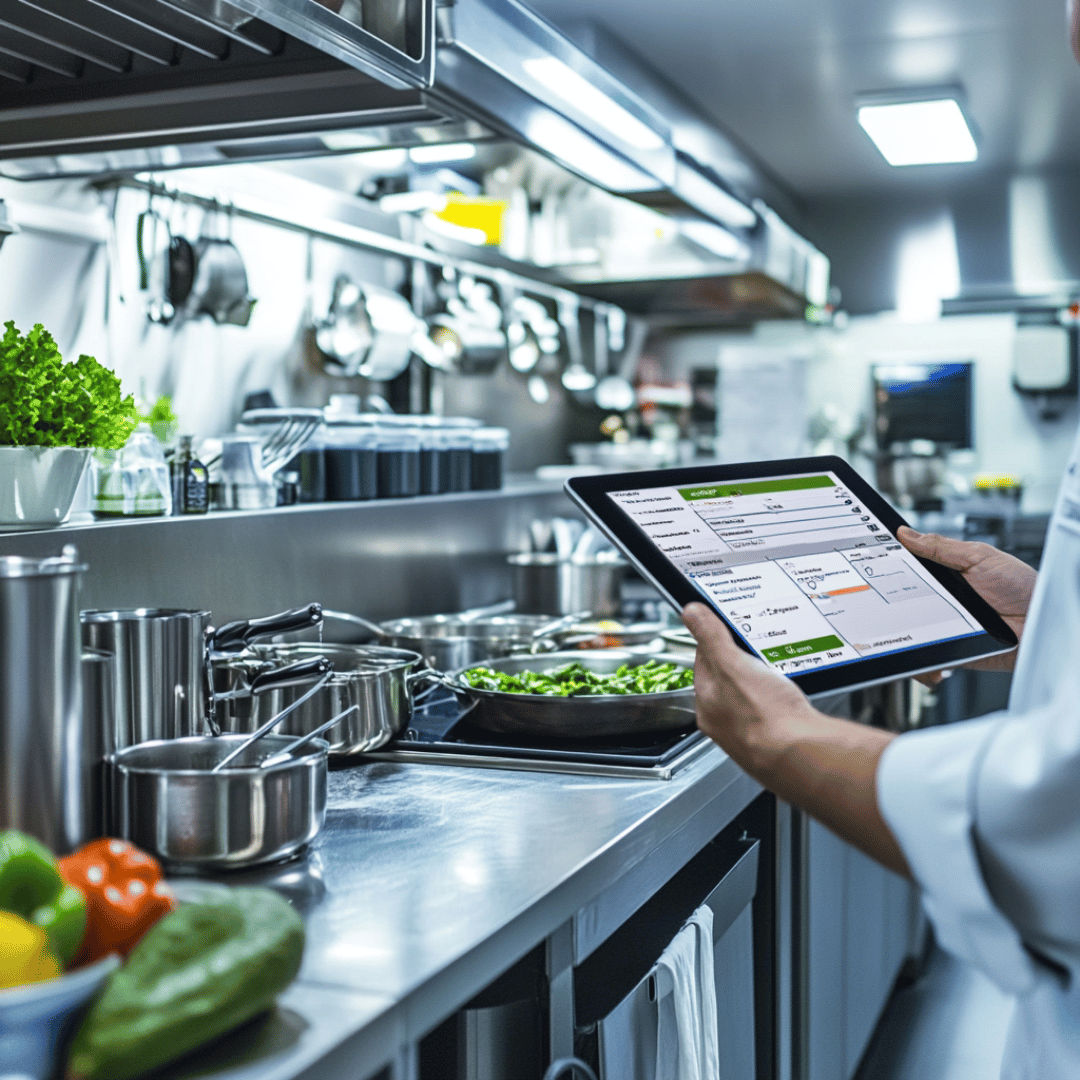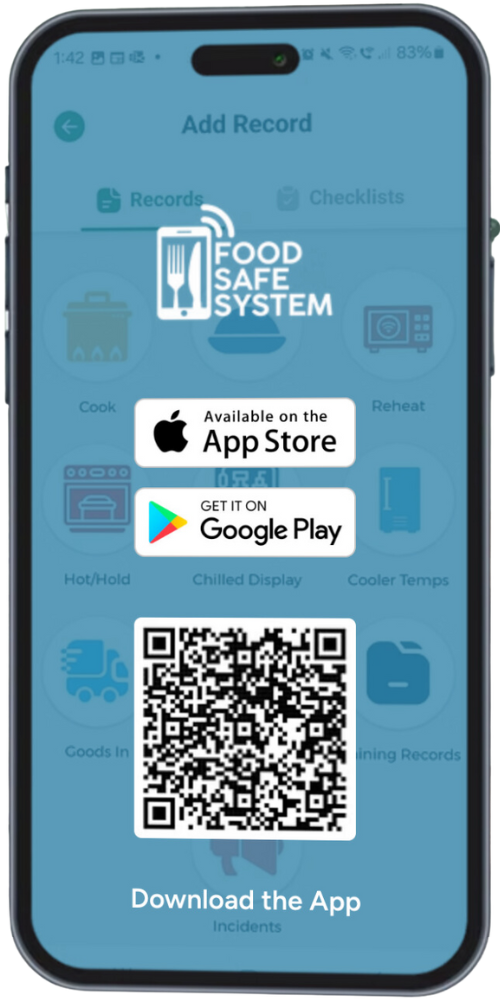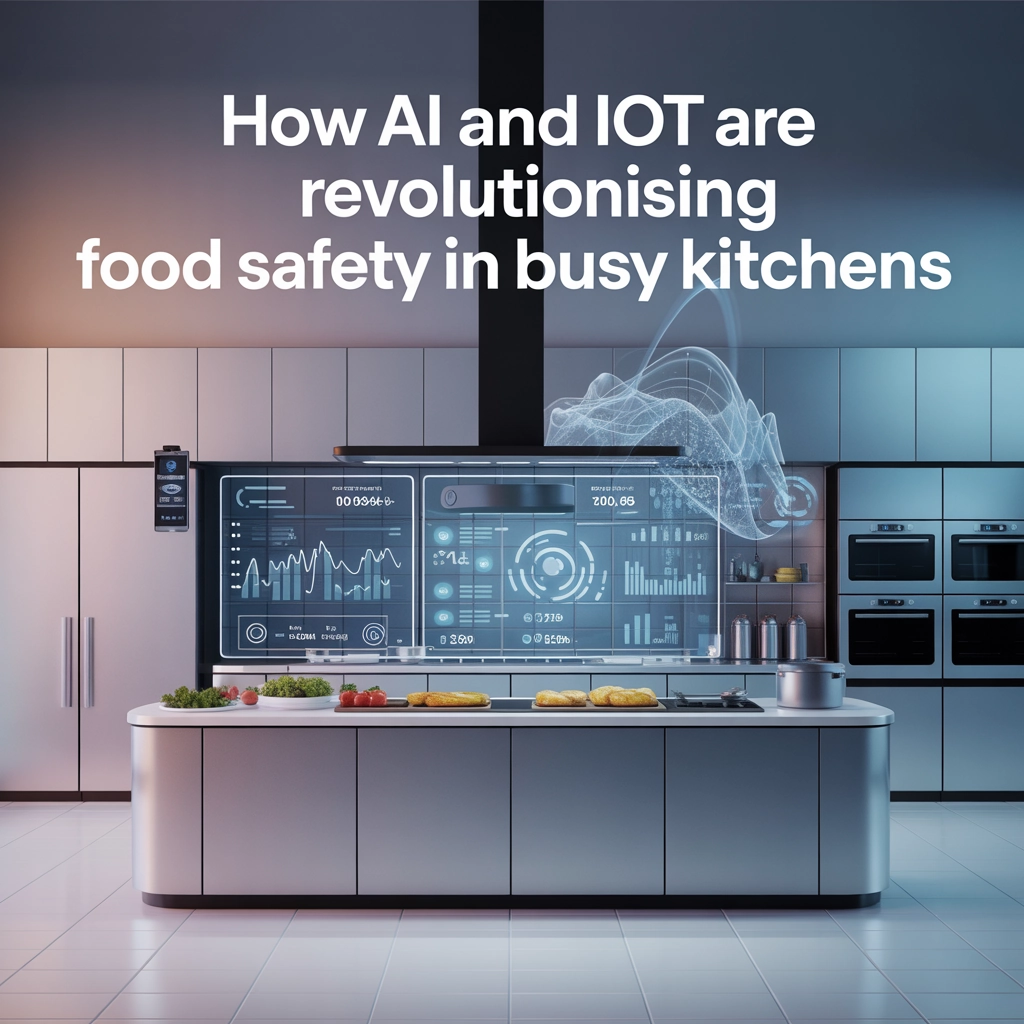
How AI and IoT Are Revolutionising Food Safety in Busy Kitchens
In today’s fast-paced food service industry, maintaining rigorous food safety standards while meeting customer demands presents a significant challenge. Commercial kitchens juggle multiple priorities—serving customers quickly, maintaining quality, and ensuring safety—often with limited staff and resources. Traditional manual safety protocols are not only time-consuming but prone to human error, potentially leading to serious health risks and regulatory violations. The good news? AI and IoT technologies are transforming this landscape, offering powerful solutions that enhance food safety while streamlining kitchen operations.
The Evolution of Kitchen Safety Management
For decades, food safety management relied on paper logs, manual temperature checks, and visual inspections. These methods, while functional, created significant operational bottlenecks:
- Staff spending hours recording temperatures and completing safety checklists
- Inconsistent monitoring during peak hours
- Delayed identification of safety issues
- Difficulty maintaining complete, audit-ready records
- Limited ability to analyze trends or predict problems
The introduction of IoT sensors and AI-powered systems has fundamentally changed this equation, creating kitchens that are not only safer but more efficient and productive.
IoT: The New Eyes and Ears of Food Safety
IoT (Internet of Things) technology creates a network of connected devices that continuously monitor critical parameters in kitchen environments. Unlike traditional methods that capture data at specific intervals, IoT sensors provide:
- 24/7 real-time monitoring of refrigeration, cooking equipment, and food storage areas
- Automated temperature logging that eliminates manual recording
- Immediate alerts when conditions fall outside safe parameters
- Historical data collection for compliance and trend analysis
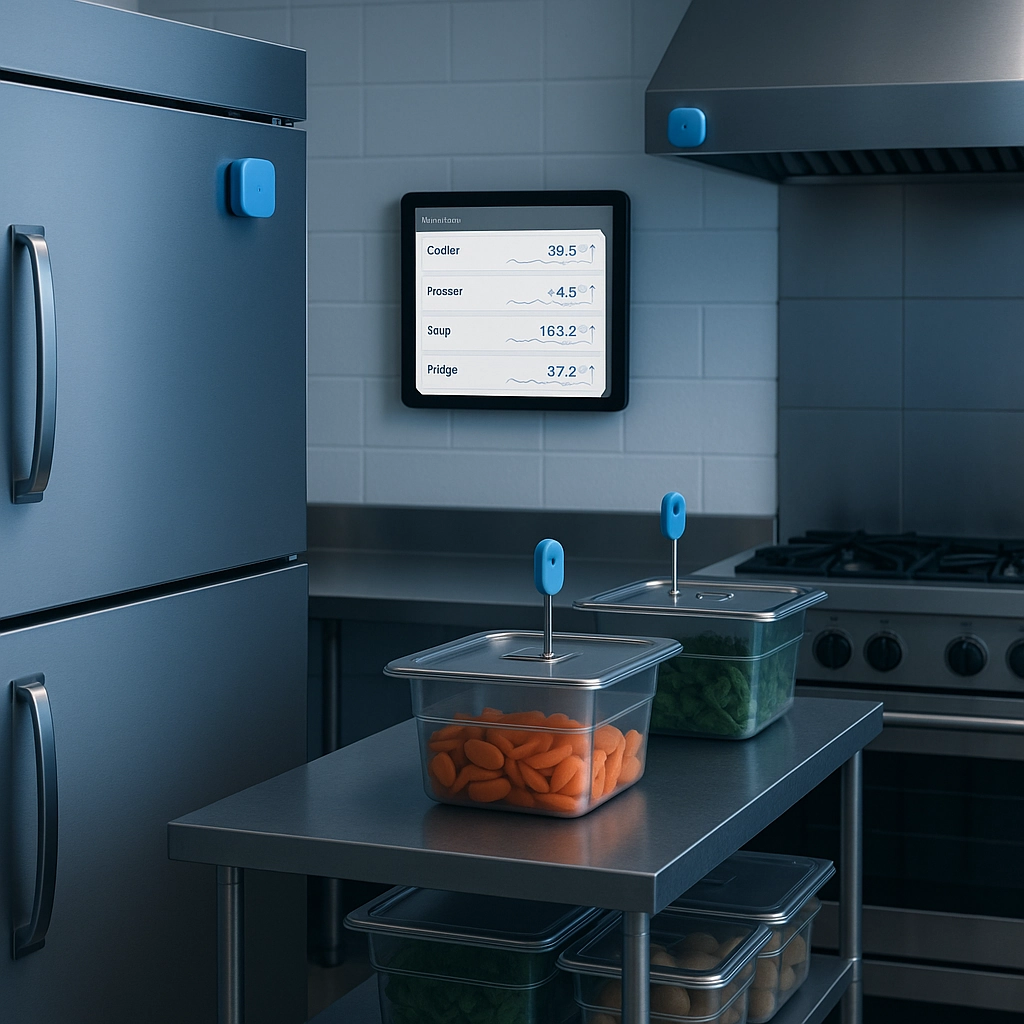
These wireless sensors can be placed throughout the kitchen—in refrigerators, freezers, hot holding equipment, and prep areas—creating a comprehensive safety net that catches issues before they become problems.
“The ability to monitor temperatures continuously rather than just a few times per day represents a quantum leap in food safety capability,” explains food safety expert Dr. Lisa Chen. “It’s like going from having a security guard who checks your building a few times per night to having a complete surveillance system that never sleeps.”
AI: The Brain Behind Smarter Food Safety
While IoT devices gather data, artificial intelligence transforms this information into actionable insights:
Predictive Analytics and Prevention
AI algorithms analyze patterns in equipment performance, temperature fluctuations, and operational workflows to predict potential problems before they occur. For example:
- Identifying refrigeration units that show early signs of failure before they reach unsafe temperatures
- Recognizing patterns that might indicate improper food handling procedures
- Predicting peak periods that might stress food safety protocols
This shift from reactive to preventive safety management helps kitchens avoid costly disasters rather than merely responding to them.
Automated Compliance and Documentation
One of the most time-consuming aspects of food safety management is documentation. AI systems automatically:
- Generate HACCP-compliant records from IoT sensor data
- Create audit-ready reports customized for different regulatory requirements
- Flag incomplete records or compliance gaps
- Provide digital proof of corrective actions taken
This automation saves staff hours of paperwork while ensuring more thorough and consistent documentation—a win for both operational efficiency and regulatory compliance.
Learn more about digital HACCP compliance systems at Kitchen OS HACCP Solutions.
Smart Workflow Optimization
By analyzing kitchen operations, AI can identify bottlenecks and safety vulnerabilities in workflows:
- Detecting cross-contamination risks in food preparation sequences
- Optimizing staff movements to reduce contamination potential
- Ensuring proper handwashing and hygiene protocol adherence
- Monitoring cooking processes for food safety parameter compliance
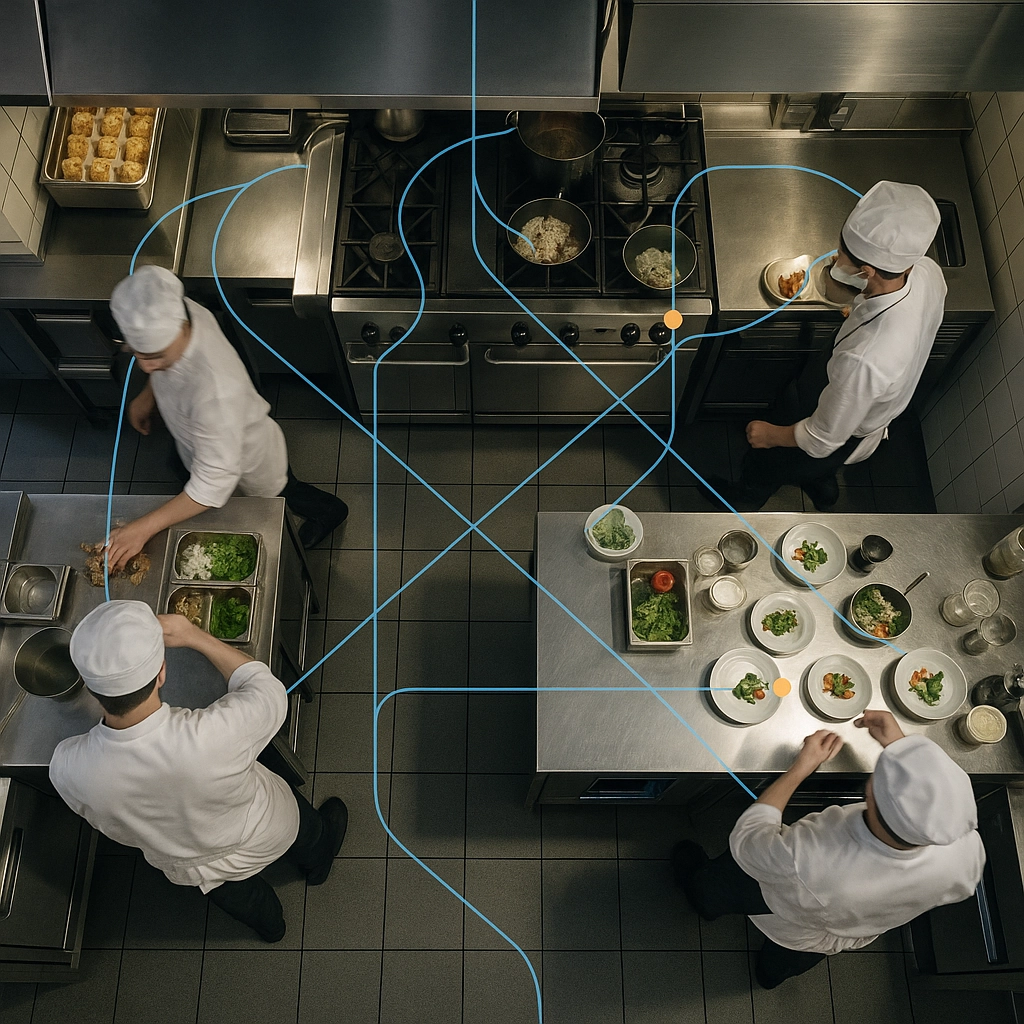
Real-World Applications Transforming Kitchen Operations
Intelligent Temperature Monitoring Systems
Temperature control remains the frontline defense against foodborne illness. Advanced IoT temperature monitoring systems offer:
- Wireless sensors that continuously monitor cold storage, hot holding, and cooking equipment
- Cloud-based dashboards showing real-time temperature data across all kitchen areas
- Automatic alerts via SMS, email, or app notifications when temperatures breach safe thresholds
- Historical temperature logs accessible for months or years for compliance verification
These systems eliminate the labor of manual temperature checks while providing superior protection against temperature abuse. More importantly, they free staff to focus on food preparation and customer service rather than compliance paperwork.
Explore IoT temperature monitoring options at Kitchen OS Technology.
Automated Food Labeling and Inventory Management
Proper food labeling and rotation are critical for preventing the use of expired or improperly stored ingredients. AI-powered systems:
- Generate accurate food labels with prep dates, expiration times, and allergen information
- Track inventory freshness and alert staff to approaching expiration dates
- Optimize ordering to reduce waste from expired products
- Ensure FIFO (First In, First Out) protocols are followed
“Improper labeling and inventory management account for a significant percentage of food waste in commercial kitchens,” notes sustainability expert James Wilson. “Smart systems that prevent this waste not only improve safety but can reduce food costs by 2-6% annually.”
Learn about digital food labeling solutions at Kitchen OS Digital Solutions.
Computer Vision for Contamination Detection
Advanced AI systems utilizing camera technology can:
- Monitor food handling procedures for compliance with safety protocols
- Detect improper glove usage or hand washing
- Identify potential physical contaminants in food preparation areas
- Verify cleaning and sanitizing procedures are properly executed
This technology provides an additional layer of protection beyond what human supervision alone can achieve, particularly in busy kitchens where managers can’t observe all activities simultaneously.
Predictive Maintenance for Critical Equipment
Equipment failure can quickly cascade into food safety emergencies. IoT-enabled predictive maintenance:
- Monitors equipment performance parameters (temperature stability, power consumption, etc.)
- Detects early warning signs of potential failures
- Schedules maintenance before critical breakdowns occur
- Extends equipment lifespan through optimized maintenance
For operators managing multiple locations, this capability transforms maintenance from a reactive emergency response to a planned, preventive activity.
Implementation Considerations and ROI
While the benefits of AI and IoT for food safety are compelling, implementation requires careful planning:
Assessment and Integration
Start with a thorough assessment of your current food safety challenges and priorities. The most successful implementations typically:
- Begin with highest-risk areas (refrigeration, cooking temperatures)
- Integrate with existing systems where possible
- Implement in phases rather than attempting complete transformation at once
- Include staff training as a central component

Return on Investment Factors
The business case for AI and IoT food safety systems typically includes:
- Labor savings: Reduction in time spent on manual temperature checks and paperwork (typically 5-10 hours per week per location)
- Waste reduction: Lower food waste from improved inventory management and prevention of temperature abuse (2-5% reduction in food costs)
- Risk mitigation: Reduced likelihood of foodborne illness outbreaks and associated costs
- Compliance assurance: Lower risk of failed inspections and associated penalties
- Brand protection: Avoiding the devastating impact of safety-related incidents on reputation
Most Food Safe System users see a positive ROI within 1 to 3 months of implementation.
Quick timeline:
-
Week 1–2: System setup, training, and staff adoption
-
Month 1: Labour savings kick in (less time on paper logs)
-
Month 2: Reduced food waste from real-time alerts
-
Month 3: Noticeable improvements in compliance readiness and inspection outcomes
For larger or multi-site businesses, breakeven can be even faster due to economies of scale.
The Future of Kitchen Safety Technology
As these technologies mature, we’re seeing exciting developments that will further transform kitchen safety:
- Integration of systems that connect inventory, ordering, food safety, and waste management into comprehensive platforms
- Advanced analytics that benchmark performance across locations and suggest targeted improvements
- Machine learning algorithms that continuously improve based on kitchen-specific data
- Augmented reality tools for staff training on proper food handling techniques
For food service operations looking to stay competitive while ensuring the highest safety standards, embracing these technologies isn’t just advantageous—it’s becoming essential.
Conclusion: A New Era in Food Safety Management
The integration of AI and IoT into kitchen operations represents a fundamental shift in how we approach food safety—from reactive checklist compliance to proactive, data-driven management. These technologies reduce the burden on staff while providing superior protection against foodborne illness risks.
For busy kitchens struggling with the competing demands of speed, quality, and safety, these innovations offer a path forward that enhances all three. The question is no longer whether to implement these technologies, but how quickly they can be integrated into operations.
Ready to explore how AI and IoT can transform food safety in your kitchen? Learn more about comprehensive food safety solutions at Kitchen OS Food Safety or contact our team for a personalized assessment of your operation’s needs.
By embracing these technologies today, you’re not just protecting your customers and your brand—you’re positioning your operation at the forefront of the industry’s evolution toward smarter, safer, and more efficient food service.
With AI and IoT tools like real-time alerts and wireless sensors, kitchens can slash manual paperwork, cut waste, and stay inspection-ready at all times. One Food Safe System user reduced food waste by £1,200/month, while others report saving hours each week on checks and reports.
Want to see how it could work in your kitchen? Book a free demo and start streamlining food safety today.
Why Food Safe System
Stay Compliant. Avoid Fines. Save Time.
Food Safe System automates your food safety records—so you’re always inspection-ready, without the paperwork hassle.
-
📲 Log temperatures, deliveries & checks from any device
-
🔔 Get alerts before anything goes wrong
-
🔒 Secure, cloud-based records for instant access during inspections
-
📉 Reduce risk of fines and failed audits
68% of major food safety issues are due to missing documentation. We fix that.
👉 Start your free trial today and take the pressure off compliance.
- Usability
- Durability
- Operating System
- Speed
5/5
With 5/5 stars, we are calling Food Safe System a solid Investment
Related Articles

Transforming Kitchen Compliance into Operational Excellence
Food Safe System is a digital food safety management solution that helps restaurants, hotels, and multi-site kitchens stay compliant, cut waste, and save time. From automated temperature monitoring to real-time dashboards, it turns food safety compliance into operational excellence – boosting efficiency and protecting your bottom line.
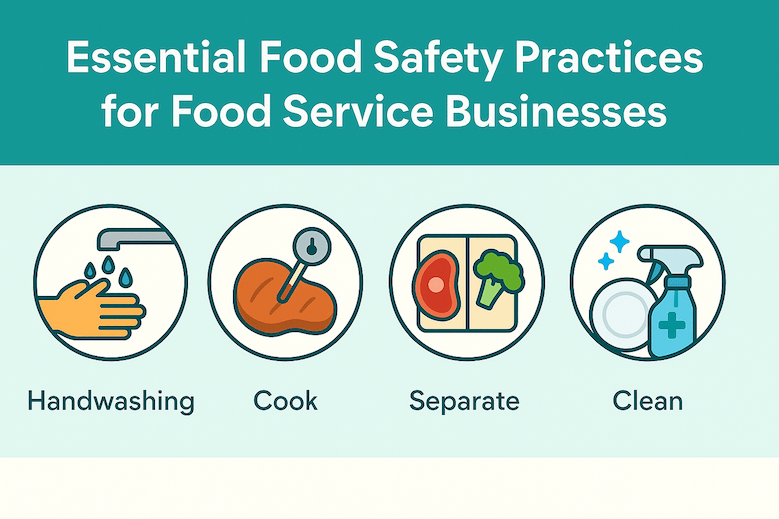
Essential Food Safety Practices for Food Service Businesses
Why Food Safe System Stay Compliant. Avoid Fines. Save Time. Food Safe System automates your food safety records—so you’re always inspection-ready, without the paperwork hassle. 📲 Log temperatures, deliveries & checks from any device 🔔 Get alerts before anything...

Essential Food Safety Practices for Food Service Businesses
Why Food Safe System Stay Compliant. Avoid Fines. Save Time. Food Safe System automates your food safety records—so you’re always inspection-ready, without the paperwork hassle. 📲 Log temperatures, deliveries & checks from any device 🔔 Get alerts before anything...
